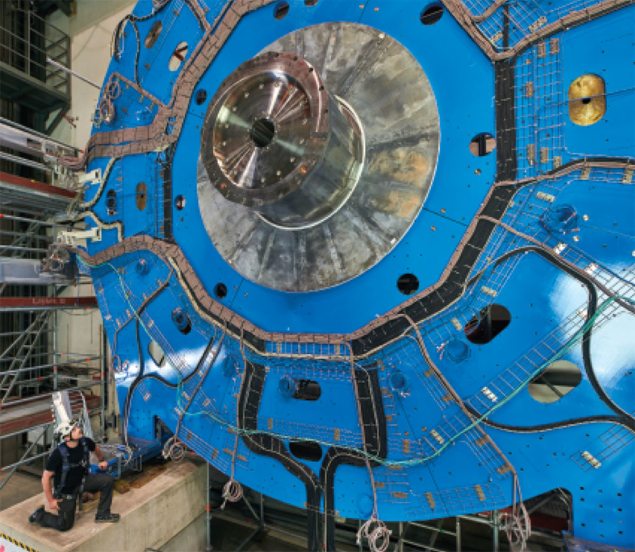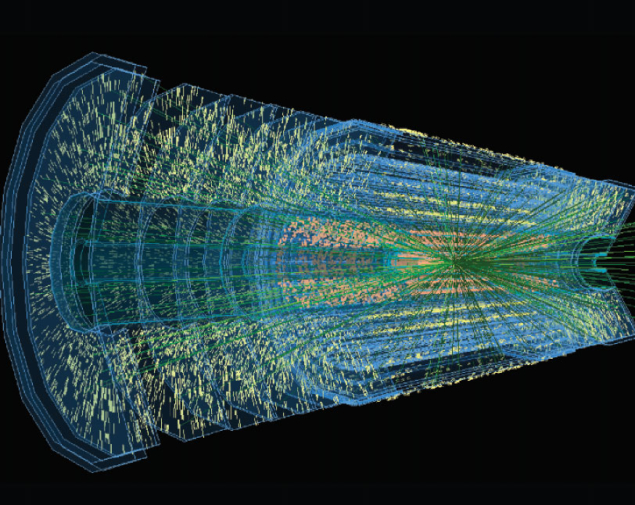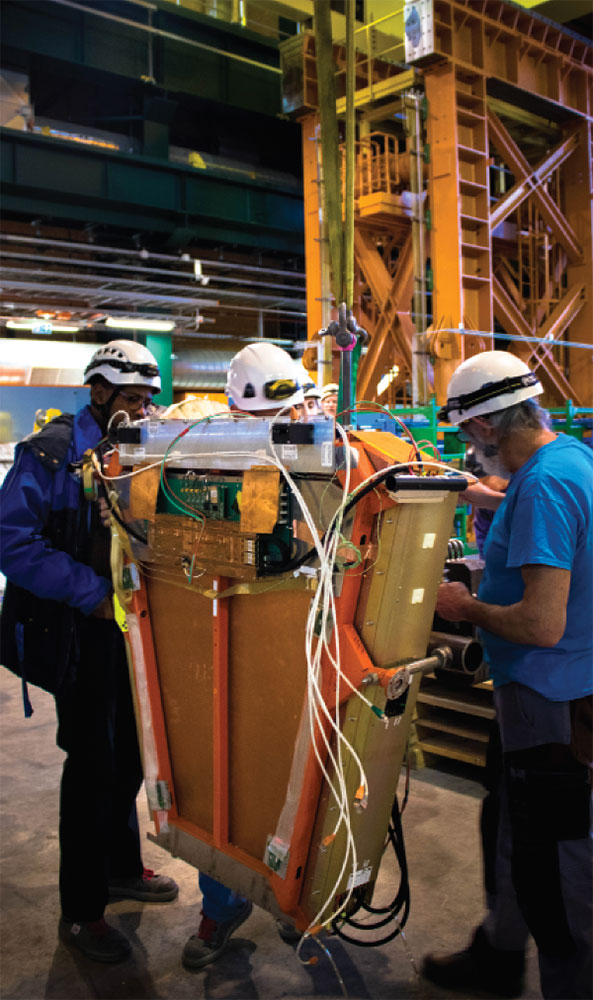New wheel-shaped detectors that allow a better trigger and measurement capability for muons are among numerous transformations taking place to maintain the ATLAS physics programme into Run 3 and beyond.

To precisely study the Higgs boson and extend our sensitivity to new physics in the coming years of LHC operations, the ATLAS experiment has a clear upgrade plan in place. Ageing of the inner tracker due to radiation exposure, data volumes that would saturate the readout links, obsolescence of electronics, and a collision environment swamped by up to 200 interactions per bunch crossing are some of the headline challenges facing the 3000-strong collaboration. While many installations will take place during long-shutdown three (LS3), beginning in 2024, much activity is taking place during the current LS2 – including major interventions to the giant muon spectrometer at the outermost reaches of the detector.
The main ATLAS upgrade activities during LS2 are aimed at increasing the trigger efficiency for leptonic and hadronic signatures, especially for electrons and muons with a transverse momentum of at least 20 GeV. To improve the selectivity of the electron trigger, the amount of information used for the trigger decision will be drastically increased: until now, the very fine-grained information produced by the electromagnetic calorimeter is grouped in “trigger towers” to limit the number and hence cost of trigger channels, but advances in electronics and the use of optical fibres allows the transmission of a much larger amount of information at a reasonable cost. By replacing some of the components of the front-end electronics of the electromagnetic calorimeter, the level of segmentation available at the trigger level will be increased fourfold, improving the ability to reject jets and preserve electrons and photons. The ATLAS trigger and data-acquisition systems will also be upgraded during LS2 by introducing new electronics boards that can deal with the more granular trigger information coming from the detector.
New small wheels
Since 2013, ATLAS has been working on a replacement for its “small wheel” forward-muon endcap systems so that they can operate under the much harsher background conditions of the future LHC. The new small wheel (NSW) detectors employ two detector technologies: small-strip thin gap chambers (sTGC) and Micromegas (MM). Both technologies are able to withstand the higher flux of neutrons and photons expected in future LHC interactions, which will produce counting rates as high as 20 kHz cm–2 in the inner part of the NSW, while delivering information for the first-level trigger and muon measurement. The main aim of the NSW is to reduce the fake muon triggers in the forward region and improve the sharpness of the trigger threshold drastically, allowing the same selection power as the present high-level trigger.

The first NSW started to take shape at CERN last year. The iron shielding disks (see “Iron support” image), which serve as the support for the NSW detectors in addition to shielding the endcap muon chambers from hadrons, have been assembled, while the services team is installing numerous cables and pipes on the disks. Only a few millimetres of space is available between the disk and the chambers for the cables on one side, and between the disk and the calorimeter on the other side, and the task is made even more difficult by having to work from an elevated platform. In a nearby building, the sTGC chambers coming from the different construction sites are being integrated in full wedges and, soon this year, the Micromegas wedges will be integrated and tested at a separate integration site. The construction of the sTGC chambers is taking place in Canada, Chile, China, Israel and Russia, while the Micromegas are being constructed in France, Germany, Greece, Italy and Russia. On a daily basis, cables arrive to be assembled with connectors and tested; piping is cut to length, cleaned and protected until installation; and gas-leak and high-voltage test stations are employed for quality control. In the meantime, several smaller upgrades will be deployed during LS2, including the installation of 16 new muon chambers in the inner layer of the barrel spectrometer.
The organisation of LS2 activities is a complex exercise in which the maintenance needs of the detectors have to be addressed in parallel with installation schedules. After a first period devoted to the opening of the detector and the maintenance of the forward muon spectrometer, the first major non-standard operation (scheduled for January) will be to bring to the surface the first small wheel. Having the detector fully open on one side will also allow very important test for the installation of the new all-silicon inner tracker, which is scheduled to be installed during LS3. The upgrade of the electromagnetic-calorimeter electronics will start in February and continue for about one year, requiring all front-end boards to be dismounted from their crates, modifications to both the boards and the crates, and reinstallation of the modified boards in their original position. Maintenance of the ATLAS tile calorimeter and inner detector will take place in parallel, a very important aspect of which will be the search for leaks in the front-end cooling system.

Delicate operation
In August, the first small wheel will be lowered again, allowing the second small wheel to be brought to the surface to make space for the NSW installation foreseen in April 2020. In the same period, all the optical transmission boards of the pixel detector will have to be changed. Following these installations, there will be a long period of commissioning of all the upgraded detectors and the preparation for the installation of the second NSW in the autumn of 2020. At that moment the closing process will start and will last for about three months, including the bake-out of the beam pipe, which is a very delicate and dangerous operation for the pixel detectors of the inner tracker.
A coherent upgrade programme for ATLAS is now fully underway to enable the experiment to fully exploit the physics potential of the LHC in the coming years of high-luminosity operations. Thousands of people around the world in more than 200 institutes are involved, and the technical design reports alone for the upgrade so far number six volumes, each containing several hundred pages. At the end of LS2, ATLAS will be ready to take data in Run 3 with a renewed and better performing detector.
Further reading
ATLAS Collaboration 2017 CERN-LHCC-2017-021.
ATLAS Collaboration 2017 CERN-LHCC-2017-020.
ATLAS Collaboration 2017 CERN-LHCC-2017-019.
ATLAS Collaboration 2017 CERN-LHCC-2017-018.
ATLAS Collaboration 2017 CERN-LHCC-2017-017.
ATLAS Collaboration 2017 CERN-LHCC-2017-005.





